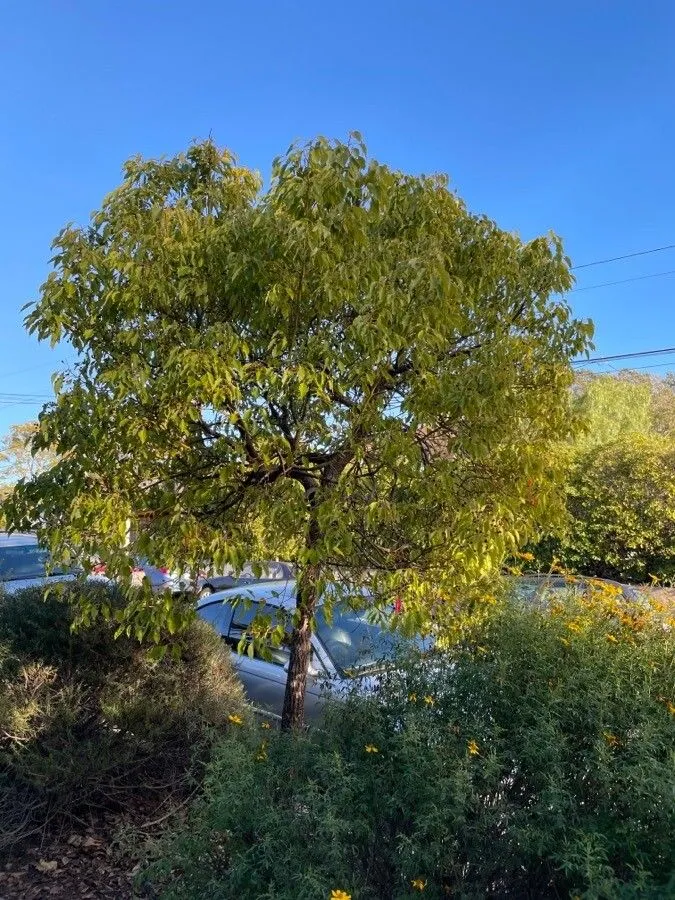
Author: J.Presl (L.)
Bibliography: F. Berchtold & J. S. Presl, Prir. rostlin 2:36, 47-56, t. 8. 1825
Year: 1825
Status: accepted
Rank: species
Genus: Cinnamomum
Vegetable: Unknown
Observations: Korea (Jeju-do), WC. & S. Japan to E. & S. Taiwan
The Camphortree, scientifically known as Cinnamomum camphora, is a noteworthy species within the Lauraceae family. This tree, documented by the notable botanists F. Berchtold and J. S. Presl in their comprehensive work Prir. rostlin published in 1825, is renowned for its aromatic foliage and versatile camphor production.
Originating from the temperate and subtropical regions of East Asia, the Camphortree thrives in diverse landscapes ranging from the western and southern parts of Japan to the eastern and southern regions of Taiwan, including Korea’s Jeju-do. This geographic scope has allowed the Camphortree to adapt to a variety of climatic conditions, ensuring its survival and proliferation over centuries.
The distinctiveness of the Camphortree lies not only in its ecological adaptability but also in its cultural and economic significance. The tree is revered for its powerful fragrance, which emanates from its leaves, bark, and wood. This aroma is attributed to the presence of camphor, a substance with numerous applications in traditional medicine, insect repellent products, and even in the manufacturing of celluloid.
Botanically, the Camphortree reaches impressive heights, often growing between 20 to 30 meters tall, with a robust trunk and widespread canopy. The evergreen leaves are glossy and lanceolate, contributing to the tree’s ornamental value. When in bloom, the tree produces small, white or cream-colored flowers, which eventually give rise to dark, berry-like fruits.
In addition to its functional uses, the Camphortree holds a significant place in local traditions and practices. In many cultures within its native range, the tree is associated with health and wellness, owing to the healing properties ascribed to camphor. Additionally, it serves as a symbol of longevity and resilience, revered for its ability to withstand the test of time.
Overall, the Camphortree exemplifies a harmonious blend of natural beauty and practical utility, securing its place as a cherished component of East Asian biodiversity and horticultural heritage.
Deu: campher, kampferbaum
Eng: camphortree, japanese camphor, japanese camphortree, camphor, camphor laurel, camphor tree, camphor-laurel, camphorwood
Spa: alcanfor, alcanforero
Por: açcanforeira, canela-canforeira, canforeira, árvore-da-camphora, árvore-da-cânfora
Fra: camphre, camphrier
Ita: canfora
Swe: kamferträd
Afr: kanferboom
Kor: nok-na-mu
En: Camphortree, Japanese camphor, Japanese camphortree, Camphor, Camphor laurel, Camphor tree, Camphor-laurel, Camphorwood
Af: Kanferboom
Fr: Camphre, Camphrier, Arbre à camphre
De: Campher, Kampferbaum
It: Canfora
Ko: Nok-na-mu
Pt: Açcanforeira, Canela-canforeira, Canforeira, Árvore-da-camphora, Árvore-da-cânfora
Es: Alcanfor, Alcanforero
Sv: Kamferträd
Taken Feb 5, 2017 by Yoan MARTIN (cc-by-sa)
Taken Sep 26, 2022 by Lily Cheng Clavel (cc-by-sa)
Taken Jun 16, 2019 by Bresolin Vinicius (cc-by-sa)
Taken May 20, 2020 by mizuko (cc-by-sa)
Taken Oct 27, 2019 by Carboni Vincenzo (cc-by-sa)
© copyright of the Board of Trustees of the Royal Botanic Gardens, Kew.
© copyright of the Board of Trustees of the Royal Botanic Gardens, Kew.
© copyright of the Board of Trustees of the Royal Botanic Gardens, Kew.
Taken Dec 11, 2016 by Denis SABATIER (cc-by-sa)
Taken Dec 12, 2021 by ao ao (cc-by-sa)
Taken Apr 8, 2019 by Endeiza Edu (cc-by-sa)
Taken Jan 6, 2022 by Dan Maxwell (cc-by-sa)
Taken Oct 27, 2019 by Carboni Vincenzo (cc-by-sa)
Taken Feb 5, 2017 by Yoan MARTIN (cc-by-sa)
Taken Nov 29, 2012 by P. Bonnet (cc-by-sa)
Taken Jun 20, 2020 by marsic tamara (cc-by-sa)
Taken Jan 6, 2022 by Dan Maxwell (cc-by-sa)
Taken Jul 30, 2021 by Miroslav Cikan (cc-by-sa)
Taken Jan 6, 2022 by Dan Maxwell (cc-by-sa)
Taken Jul 30, 2021 by Miroslav Cikan (cc-by-sa)
Taken Apr 8, 2019 by Endeiza Edu (cc-by-sa)
Taken Jun 16, 2019 by Bresolin Vinicius (cc-by-sa)
Taken Sep 22, 2022 by Илья Шестопалов (cc-by-sa)
Taken May 28, 2020 by Hentschel Andres (cc-by-sa)
Taken Mar 20, 2022 by Cutrone Giovanni (cc-by-sa)
Taken May 23, 2019 by Franco Colnago (cc-by-sa)
Taken Nov 28, 2021 by 歸一 謝 (cc-by-sa)
Taken Apr 8, 2019 by Endeiza Edu (cc-by-sa)
Taken Apr 24, 1967 by Royal Botanic Garden Edinburgh – Anonymous (cc-by-nc)
Taken Jul 6, 1971 by Royal Botanic Garden Edinburgh – Anonymous (cc-by-nc)
Taken Aug 5, 2016 by Yvon REPÉRANT (cc-by-sa)
Taken Mar 24, 2014 by Tela Botanica − Denis NESPOULOUS (cc-by-sa)
Taken Sep 4, 2021 by Enric Comas (cc-by-sa)
Family: Myrtaceae Author: (F.Muell.) K.D.Hill & L.A.S.Johnson Bibliography: Telopea 6: 402 (1995) Year: 1995 Status:…
Family: Rubiaceae Author: Pierre ex A.Froehner Bibliography: Notizbl. Bot. Gart. Berlin-Dahlem 1: 237 (1897) Year:…
Family: Sapindaceae Author: Koidz. Bibliography: J. Coll. Sci. Imp. Univ. Tokyo 32(1): 38 (1911) Year:…
Family: Asteraceae Author: A.Gray Bibliography: Pacif. Railr. Rep.: 107 (1857) Year: 1857 Status: accepted Rank:…
Family: Fabaceae Author: Medik. Bibliography: Vorles. Churpfälz. Phys.-Ökon. Ges. 2: 398 (1787) Year: 1787 Status:…
Family: Aspleniaceae Author: (Cav.) Alston Bibliography: Bull. Misc. Inform. Kew 1932: 309 (1932) Year: 1932…